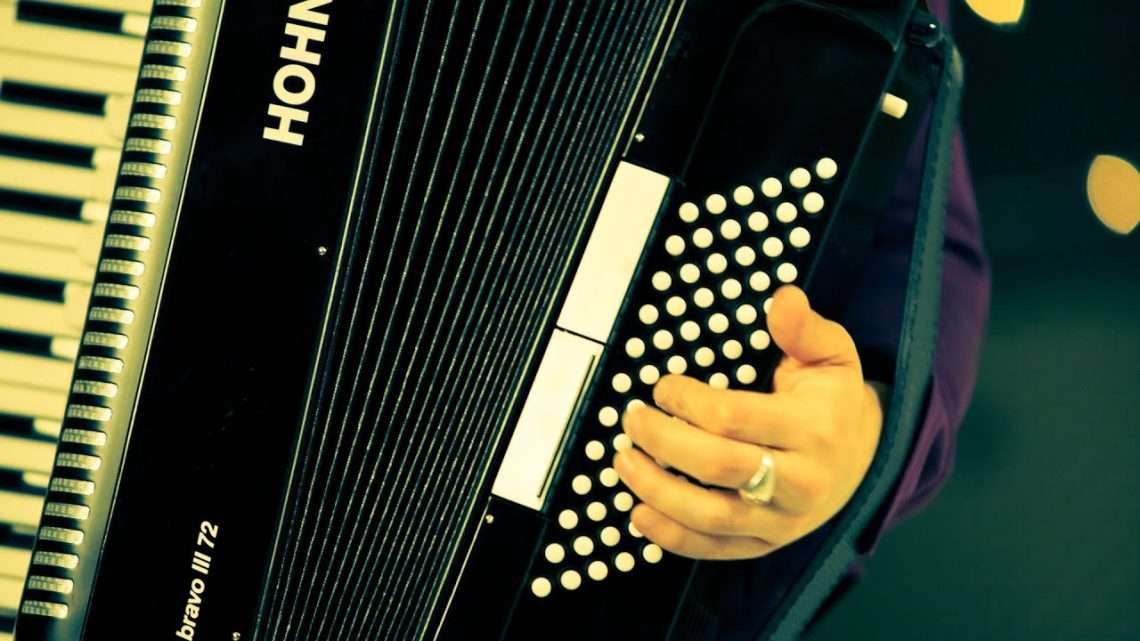
How to get an idea of the bass of an accordion?
Accordion basses are black magic for many people and often, especially at the beginning of music education, they are very difficult. The accordion itself is not one of the easiest instruments and in order to play it you have to combine many elements. In addition to the right and left hands in harmony, you also need to learn how to smoothly stretch and fold the bellows. All this means that the beginnings are not the easiest ones, but when we manage to grasp these basics, the pleasure of playing is guaranteed.
The most troublesome issue for a person who starts learning is the bass side, on which we are forced to play in the dark. We are simply not able to observe which bass button we press, except in the mirror 😊. It might therefore seem that in order to learn to play the accordion, one needs above-average skills. Of course, the skills and talent are the most useful, but the most important thing is the will to practice, regularity and diligence. Contrary to appearances, the bass is not difficult to master. It is a schematic, repeating arrangement of buttons. In fact, you only need to know the distances between the basic bass, e.g. X from the second order, and the basic bass Y also from the second order, but one floor above the row. The entire system is based on the so-called circle of fifth.
Such a point of reference is the basic bass C, which is located in the second row more or less in the middle of our basses. Before we start explaining where the individual basses are, you need to know the basic diagram of the entire system.
And so, in the first row we have auxiliary basses, also called in thirds, and why such a name will also be explained in a moment. In the second row there are basic basses, then in the third row there are major chords, in the fourth row minor chords, in the fifth row seventh chords and diminished in the sixth row.
So let’s go back to our basic C bass in the second row. This bass has a characteristic cavity thanks to which we are able to locate it very quickly. We have already told ourselves that the bass system is based on the so-called circle of fifth, and this is because each bass higher in relation to that of the lower row is an interval of a clean fifth up. A perfect fifth has 7 semitones, that is, counting with semitones from C upwards we have: the first semitone C sharp, the second semitone D, the third semitone Dis, the fourth semitone E, the fifth semitone F, the sixth semitone F sharp and the seventh semitone G. In turn, from G seven semitones to treble is D, from D seven semitones up is A, etc. etc. So as you can see, the distances between the individual notes in the second row constitute the interval of a perfect fifth. But we told ourselves that our basic C bass is in the second row more or less in the middle, so to find out what bass is below it we have to do the fifth clear down from that C. So the first semitone from C down is H, the next semitone down from H is B, from B downward is a semitone A, from A downward semitone is Ace, from Ace the semitone down is G, from G the semitone downward is Ges and from Ges otherwise also (F sharp) a semitone down is F. And we have seven semitones down from C, which gives us the sound F.
As you can see, the knowledge of the number of semitones allows us to freely calculate where the basic bass is in the second row. We also told ourselves that the basses in the first row are auxiliary basses also called thirds. The name in thirds comes from the interval that divides the primary bass in the second order to the auxiliary bass in the first order. This is the distance of a major third, or four semitones. Therefore, if we know where C is in the second row, we can easily calculate that in the adjacent first row we will have a third bass E, because a major third from C gives us E. Let’s count it in semitones: the first semitone from C is Cis, the second is D, the third is Dis, and the fourth is E. And so we can calculate for each sound we know, so if we know that directly above C in the second row is G (we have a fifth distance), then from G in the row the adjacent first one will have H (the distance of a major third). The distances between the individual basses in the first row will also be within a pure fifth as is the case in the second row. So there is H over H over H, etc. Auxiliary, third octave basses are marked by underlining them to distinguish them.
The third row is an arrangement of major chords, i.e. under one button we have a taut major chord. And so, in the third row, next to the basic bass C in the second row, we have a major C major chord. The fourth row is a minor chord, i.e. next to the basic bass C in the second row, in the fourth row there will be a c minor chord, in the fifth row we will have a seventh chord, i.e. C7, and in the sixth row we will have diminished chords, i.e. in the C series it will be reduced c (d). And chronologically each row of basses: 7nd row. G, XNUMXrd row G major, XNUMXth row G minor, Fifth row GXNUMX. VI n. g d. And this is the order on the entire bass side.
Of course, it may seem confusing and complicated at first, but in fact, after a closer examination of the pattern and after calmly assimilating it, everything becomes clear and lucid.





